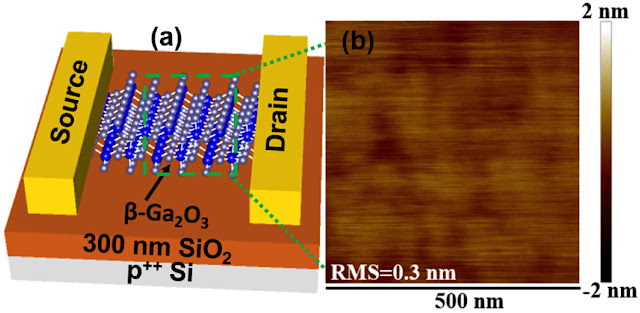Semiconductor for next generation power electronics
by noreply@blogger.com (brian wang) from NextBigFuture.com on (#29VFK)
Researchers have demonstrated the high-performance potential of an experimental transistor made of a semiconductor called beta gallium oxide, which could bring new ultra-efficient switches for applications such as the power grid, military ships and aircraft.
The semiconductor is promising for next-generation "power electronics," or devices needed to control the flow of electrical energy in circuits. Such a technology could help to reduce global energy use and greenhouse gas emissions by replacing less efficient and bulky power electronics switches now in use.
The transistor, called a gallium oxide on insulator field effect transistor, or GOOI, is especially promising because it possesses an "ultra-wide bandgap," a trait needed for switches in high-voltage applications.
 The schematic at left shows the design for an experimental transistor made of a semiconductor called beta gallium oxide, which could bring new ultra-efficient switches for applications such as the power grid, military ships and aircraft. At right is an atomic force microscope image of the semiconductor. (Purdue University image/Peide Ye
The schematic at left shows the design for an experimental transistor made of a semiconductor called beta gallium oxide, which could bring new ultra-efficient switches for applications such as the power grid, military ships and aircraft. At right is an atomic force microscope image of the semiconductor. (Purdue University image/Peide Ye
Read more










The semiconductor is promising for next-generation "power electronics," or devices needed to control the flow of electrical energy in circuits. Such a technology could help to reduce global energy use and greenhouse gas emissions by replacing less efficient and bulky power electronics switches now in use.
The transistor, called a gallium oxide on insulator field effect transistor, or GOOI, is especially promising because it possesses an "ultra-wide bandgap," a trait needed for switches in high-voltage applications.
 The schematic at left shows the design for an experimental transistor made of a semiconductor called beta gallium oxide, which could bring new ultra-efficient switches for applications such as the power grid, military ships and aircraft. At right is an atomic force microscope image of the semiconductor. (Purdue University image/Peide Ye
The schematic at left shows the design for an experimental transistor made of a semiconductor called beta gallium oxide, which could bring new ultra-efficient switches for applications such as the power grid, military ships and aircraft. At right is an atomic force microscope image of the semiconductor. (Purdue University image/Peide YeRead more